Otherwise known as “Big ass box of buttons” This one is a Fanuc 18i-T with a C axis (C is the angular position of the chuck)
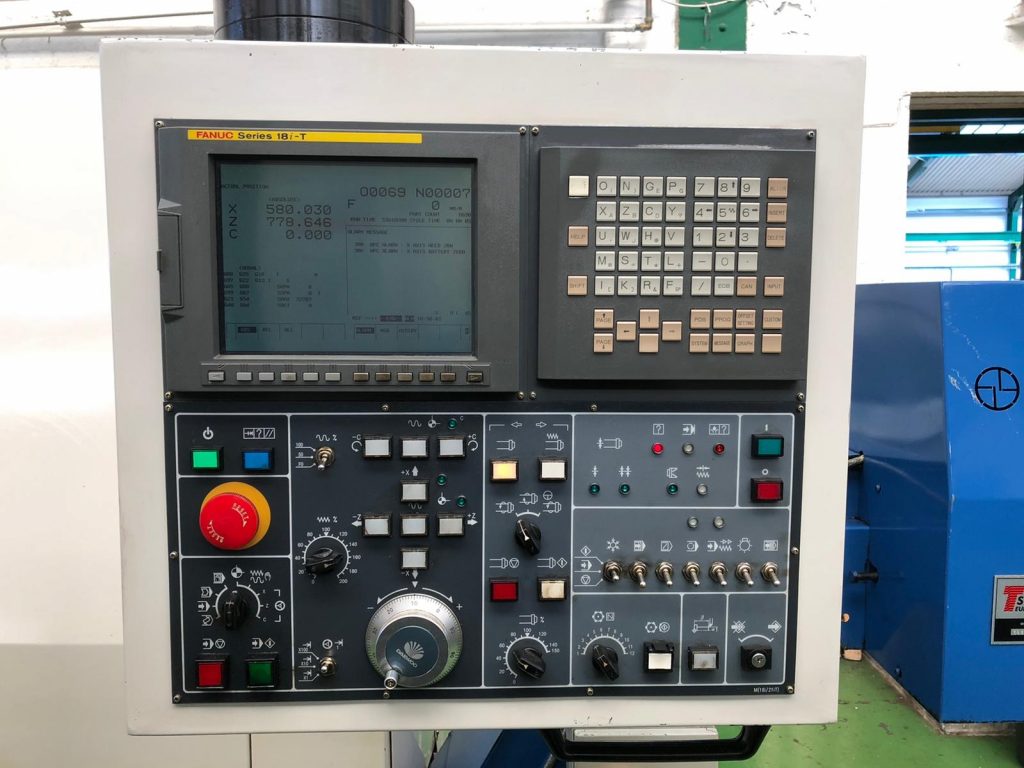
Not going to look too hard at the screen and soft keys or all the letter buttons just yet, but lets have a look at the lower control panel and see what that does.
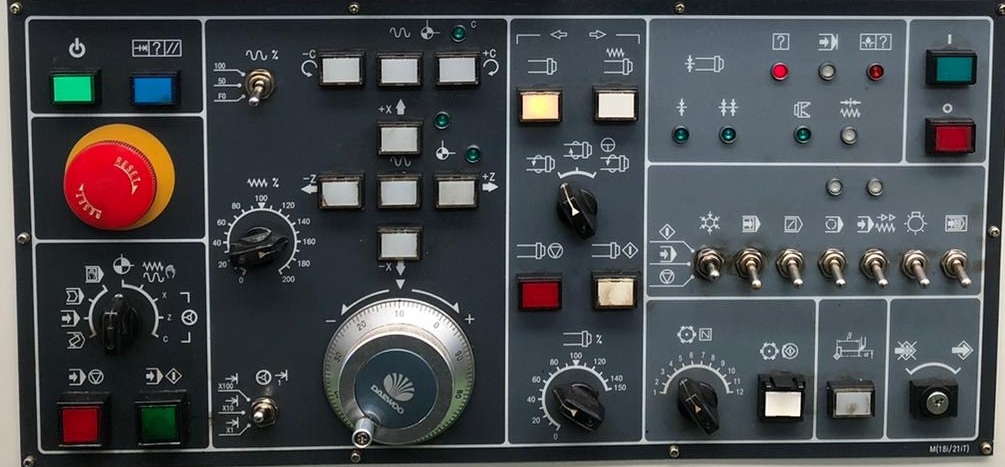
Looks complicated but it really isn’t. One piece at a time ok?
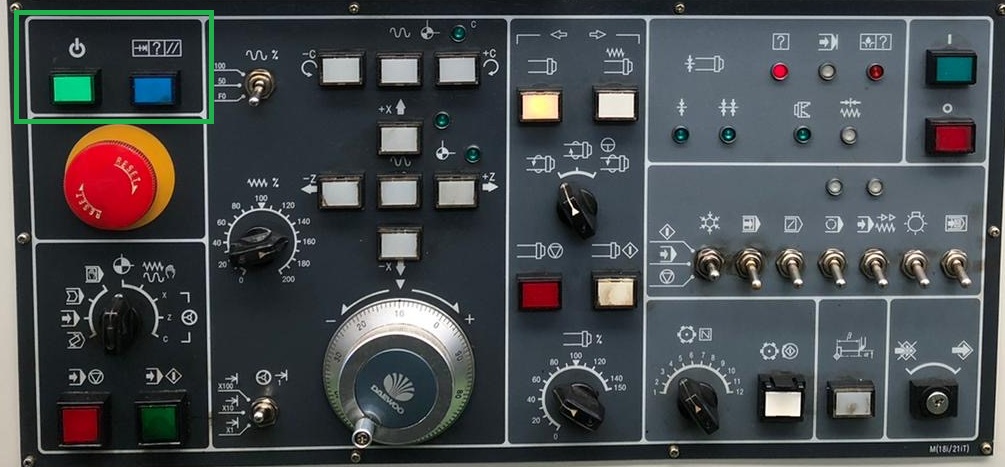
Main system power on / power off, yep the basic on/off switch.
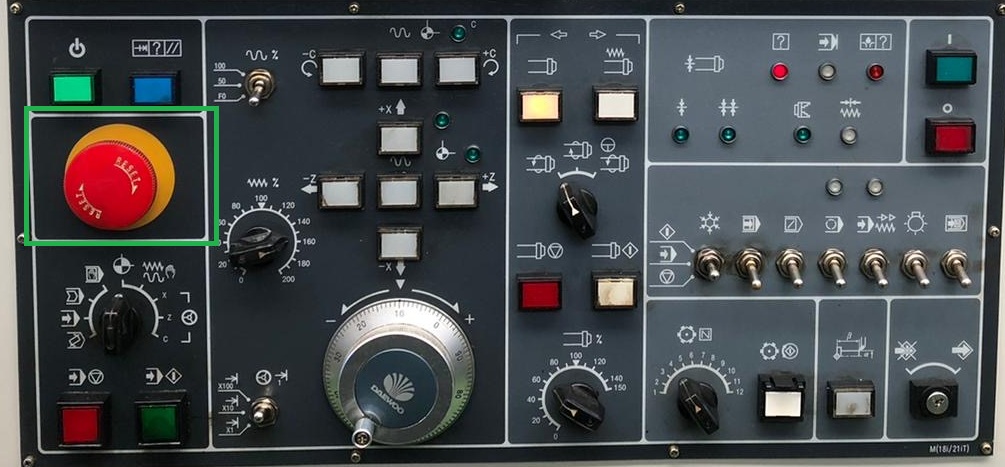
Really? if you need to ask then please take up something else, engineering isn’t for you. This is the “Oh shit” button or emergency stop. If you have to use this then something has gone very wrong.
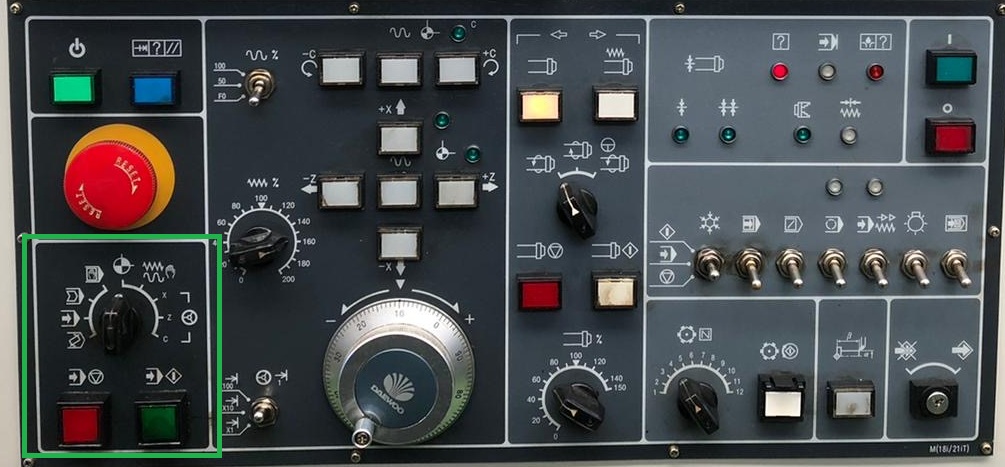
Function control and cycle start. From the bottom, Green – cycle start, Red – cycle pause. If you use the red one you can simply then hit the green one and the cycle will continue.
Above that is a bit more complicated. Going clockwise from bottom left.
Edit: in this mode you can edit the programs you intend to use.
MEM: This is the run mode or memory mode where the machine is controlled by the program you have selected.
Tape/DNC: This allows programs to be loaded or saved to a local device such as a PC or card reader.
MDI: Manual Direct Input, in this mode you can type one block of code into the control and hit the green button and it will execute just that code on the screen. This could be a complete block of code or something as simple as one code like “G00”.
REF/RTN: Reference – Return .At the start of the working day the machine has to work out exactly where it’s current ,physical position is related to the machines reference, Using this mode allows you to set all axis back to the start / home position.
Jog: In this more you control the machine axis moves using the white control buttons explained further on. This can be in “Rapid” speed or at the programmed “Feed” speeds. It’s a manual mode that just means you can move the axis by button rather than turning a wheel.
Handwheel X, Handwheel Z, Handwheel C: This allows the given axis to be moved using the larger wheel mentioned further on(to the right of the rotary switch). It tends to be a more precise system for when you “touch a tool onto the job” or are “setting offsets” Select the axis you want to move then turn the wheel.
Head for the next page to read about the next section.